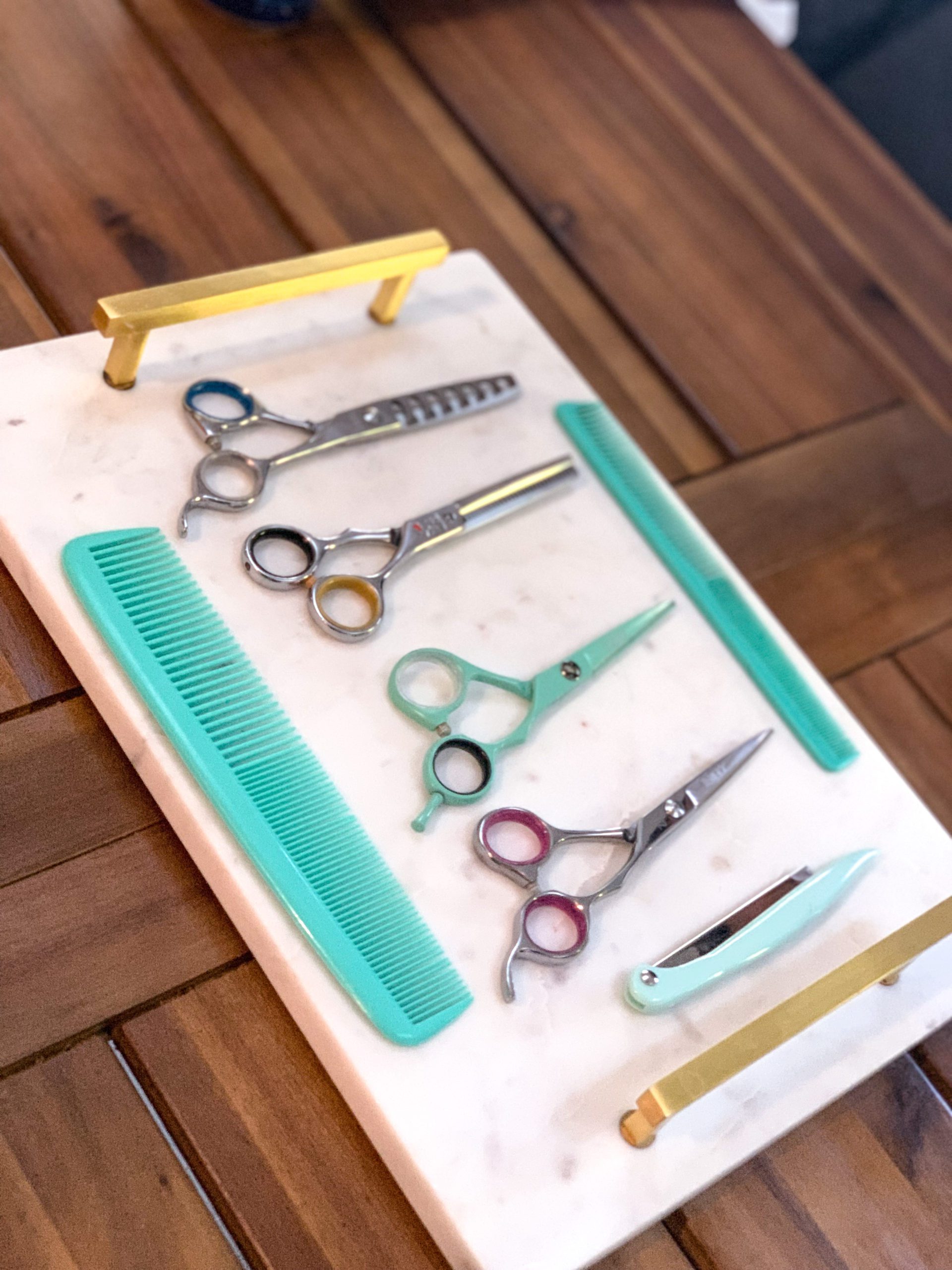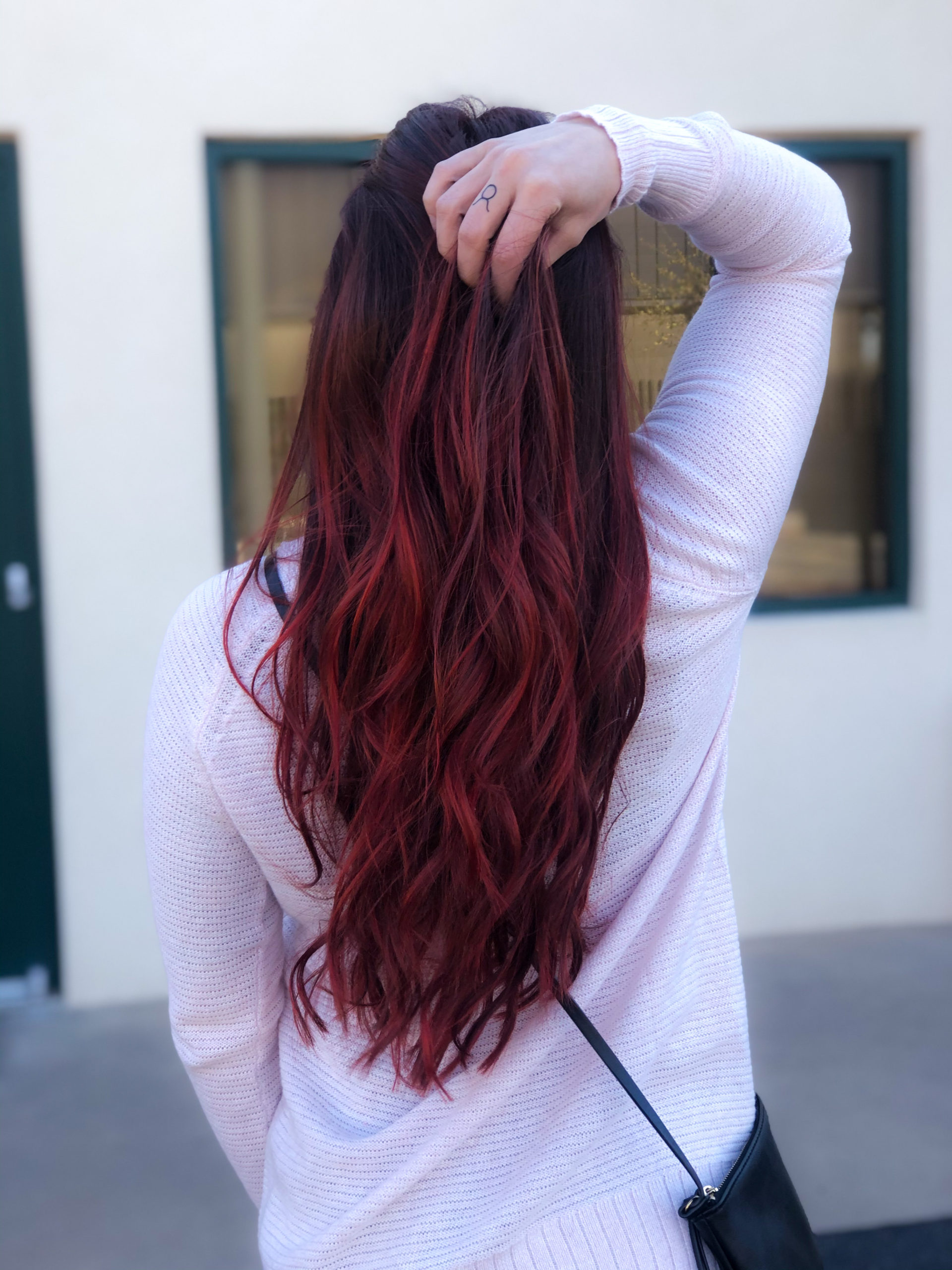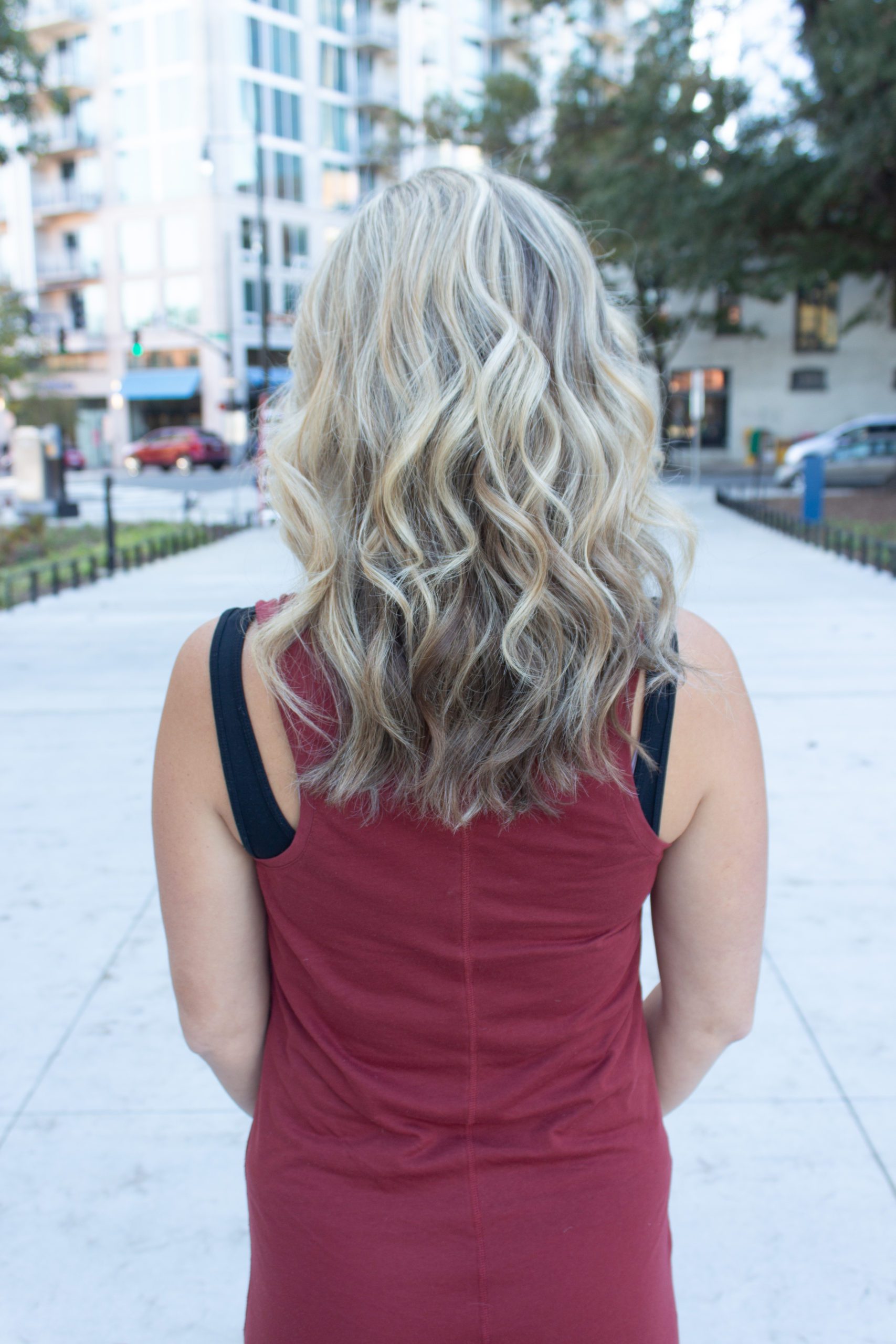
How Often You Should Go To The Hair Salon
Let’s say you’re getting ready to get your hair done, but want to make sure you select a color and/or hairstyle that fits your maintenance needs. Or maybe you have no idea what the normal timeframe is for a salon visit. If you fit into either of these categories, don’t fret! In this post I’m going to give you an estimate of how often you should go to the hair salon based on the looks you love. This should help you in determining exactly what hair styles will work for you based on your budget and/or maintenance needs.
There are many ways that hairstylists can turn a high maintenance look into a low maintenance look with a few minor tweaks. For example, we can take an all over scalp to ends platinum blonde and add a root shadow to it. This allows the color to grow out seamlessly with the natural color. So instead of needing to come in every 4 weeks, you can now push it to 8+ weeks.
To learn more about low maintenance hair color see my post here. And you can read about high maintenance hair color here to learn the differences.
How often should I get my hair cut?
On average, every 2-12 weeks
Every haircut is different and requires different levels of maintenance. The style you have, how fast your hair grows, and your hair type will all play a role in how long you should go between salon visits.
In this section we’re going to cover how often you should get your hair cut based on the haircut style itself. You can check out my post here to read about how often you should get your hair cut based on your hair type.

How often should women get their hair cut?
On average, every 3-12 weeks
The length of the haircut plays a pretty big role in determining how often you should go to the salon. For example, a pixie cut is going to need shaped up much sooner than a long layered haircut.
Short haircuts
On average, every 3-6 weeks
Pixie cut
On average, every 3-4 weeks
A pixie needs to be cut relatively frequently to keep extra length and bulk at bay. If it gets too long or bulky, it will lay flat to the head. Pixies need lots of texture to keep that spunky look going.
Bob
On average, every 4-6 weeks
While bobs can go a little longer without a cut than a pixie can, if you go too long it will begin to lose its shape especially in the back. Depending on your look whether its stacked or undercut, the hair may begin to flip out if it gets too long or bulky in in the neck and shoulder area.
How often should I get a mid-length haircut?
On average, every 4-8 weeks
Mid-length cuts can go a little longer than shorter cuts can without heading to the salon, but you may begin to lose your texture and shape after 4-8 weeks of growth.
A mid-length cut provides the best of both worlds in my opinion. You get that shorter hair feel while still being able to pull it back into a pony or braid like you can with long hair.

How often should I get my long haircut?
On average, every 6-12 weeks
Long haired gals are able to go the longest without getting their hair cut, as long as the hair is healthy.
If the hair is healthy, you can push this towards 10+ weeks. But if your hair needs some love, I don’t recommend pushing it past 6 weeks.
Since the hair is already long you typically aren’t going for a super voluminous look. The main consideration here is cleaning up the split ends and adding layers if the hair is very thick and heavy.
How often should I cut my hair if I’m growing it out?
On average, every 4-12 weeks
This section has such a wide range because it is based solely on your hair condition. Once you have a healthy haircut and remove any and all of the split ends and damage, you can go up to 12 weeks without getting it trimmed.
That being said, if you have significant damage or fly-aways traveling up your hair strand, you have another problem on your hands.
You’ll need to be sure that you are properly taking care of your hair at home to stop the damage from getting worse. I recommend for anyone that falls into this category to come in every 4 weeks to keep cleaning up those ends and stopping any hair from breaking off further up the hair strand.
Check out my post here for how to grow your hair long and healthy, the right way.
How often should men get their hair cut?
On average, every 2-8 weeks
The time frame that men should get their hair cut is based on how soon their specific style grows out and needs shaped up again. It also varies based on their hair type and how fast it grows. But this typically means the shorter the cut; the sooner they’ll need to come in.
Skin fades/very short
On average, every 2-4 weeks
Very short cuts and skin fades typically require the most maintenance. As soon as the hair starts to grow out, the look changes.
Regular fades and short scissor cuts
On average, every 4-6 weeks
These cuts can go a little longer unnoticed without a haircut. The issue here is generally when the hair starts to hang over the ears or comes down too low on the neckline.
Longer scissor cuts/below the ear
On average, every 6-8 weeks
Since the hair is already below the ear for these cuts, they’ll just need to be trimmed when the cut begins to lose its shape and gets too long. This all depends on the hair type and the exact cut that the stylist did.
How often should you get your hair dyed?
Anywhere from 3-16 weeks
The timeframe for color maintenance varies drastically based on what type of color you have, your natural hair color, as well as the condition of your hair.

Gray coverage/full color deposit
On average, ever 3-6 weeks
How often should I get my roots dyed?
On average, every 3-5 weeks
When we talk about roots, we’re not referring to any color involving bleach or foils. The root category is solely for global root color application.
The amount of time between these appointments depends on your natural color vs. the color you’re choosing. If you’re a brunette with 50-100% gray, you’ll need to come in as often as 3 weeks to hide those new grays.
But I typically recommend clients that fit into this category to go a little lighter with your color to make the re-growth less noticeable. Another option is to add highlights into the specifically gray areas like the part line or around the face to mask the grays and give you a little more longevity.
If you have 25% gray or have highlights, then you can push this a little more towards 5 or even 6 weeks. The highlights will blend the grays as they come in.
Full color deposit
On average, every 5-10 weeks
If you are a full color gal, without any gray, you can push it even longer than the regular root touch-up. Depending on the difference in your natural color vs. what you’re coloring it will determine how long you can go in-between salon visits.
I typically recommend coloring your hair no more than 1 or 2 shades darker than your natural level. When the hair grows in lighter at the root, it isn’t a pleasant look.
It’s always better to have your hair grow in darker than the shade you are coloring it for a more natural effect. This also helps to reduce banding if you ever decide to change your hair color.
How often should you have highlights done?
On average, every 8-12 weeks
This time frame depends on how many highlights you have vs. your natural hair color. Typically the more highlights you have, the sooner you’ll need to come in for a touch-up.
I also want to stress that you shouldn’t come in too soon for highlights. You’ll want to let them grow out a bit in-between each service so that you don’t end up with too many highlights and it’s easier to touch-up each time.

How often should I get a full highlight?
On average, every 12 weeks or every third color service
I don’t typically recommend getting a full highlight every time. You can do partials and minis in-between the full highlight salon appointments. Leaving some darker sections underneath will give you more dimension in your look. The dimension will help your blonde pop and appear brighter.
How often should I get a partial highlight?
On average, every 10 weeks or every other color service
A partial highlight hits the top of the head as well as the sides and maybe a few hairline framing pieces below at the nape. The body of the hair throughout the back is left out.
You can either get this in rotation with a full highlight, or if this is the most you ever highlight, get a mini every other visit.
Mini highlight
On average, every 8 weeks
A mini highlight is the hair around your part line as well as a few face framing pieces on the sides.
This service is great for in-between your full and partial highlight services to cover any new growth that shows up top and in the front, but stops you from over-highlighting the whole head too often. It saves you some money in-between larger highlighting services as well!
How often should you have balayage or foilayage done?
On average, every 12-16 weeks

Balayage is a technique of hand painted highlights done with a clay lightener that process either in plastic wrap, under cotton, mesh, or open air. Foils are not used and this produces a very natural, sun-kissed look. You can learn more about balayage here.
Foilayage creates the same type of look that balayage does, only foils are used to achieve more levels of lift for a paler blonde than balayage can produce.
How often should I have balayage done?
On average, every 12-16 weeks
This service is extremely natural looking and does not have a harsh grow out line. It is typically seamless against your natural color and only needs touched up when you are ready to have the lightness brought up higher again.
How often should I have foilayage done?
On average, every 10-16 weeks
Foilayage may need to come in slightly sooner than a balayage will only because it is not always as seamless as balayage is. This all depends on your stylist and the products and techniques they use.
If a root smudge is done with this technique, then it can last just as long if not longer than balayage. I have a friend that I do this technique on, and we usually only do hers once or twice a year!
How often should I get a toner or gloss?
On average, every 4-8 weeks
In-between all the prior mentioned color services, you may want to have a toner or gloss applied to maintain the shade of your hair.
This will add pigment that may have faded out since it was originally done. It helps to neutralize unwanted warm or brassy tones in-between bigger color services.
I have some clients that come in for toners between their color services and others that don’t. This is typically dependent on the condition of your hair and what products you use at home.
If you use at-home toning products in the form of purple shampoos and/or color depositing conditioners, than it may not be necessary for you to come in for this service.
How often should you have keratin treatments done?

On average, every 12-20 weeks
Kertatin treatments are protein treatments that strengthen the hair and reduce frizz. The condition of the hair is the main factor in determining how long these will last for.
If your hair is over-processed and very porous, the keratin treatment will not last nearly as long. If your hair is healthy, it will hold onto the treatment for much longer.
This is because healthy hair has an intact cuticle (outer, fish scale layer of a hair strand) and the cuticle will hold in the keratin much longer than if the outer layer is damaged. The same goes for hair color.
You’ll begin to notice your hair become less manageable and more frizzy when it’s time for your next keratin treatment.
Conclusion
Knowing how often you should see your hairstylist based on the style you’re going for will help you choose the right hairstyle for your budget/maintenance needs.
On average, women should get their hair cut every 3-12 weeks. If you have short hair this is every 3-6 weeks, and if you have long hair every 6-12 weeks.
Men will need their hair cut every 2-8 weeks. Skin fades will need to see the barber sooner than longer scissor cuts.
When it comes to hair color, you’ll need to have your hair dyed every 3-16 weeks. Full color root touch ups will need to see their hairstylist every 3-10 weeks, and highlights/balayage can push their salon visits out to 8-16 weeks based on the technique.
Keratin treatments should be touched up every 12-20 weeks based on the condition of the hair and the brand of keratin treatment used.
All of these time frames are variable based on your hair condition and hair history. You may need to come in more frequently if you have damaged hair from chemicals, ironing, or lack of home maintenance.
If you have any further questions for me, leave them in the comments. As always, have a good hair day!
Last edited 09/17/24



Comments